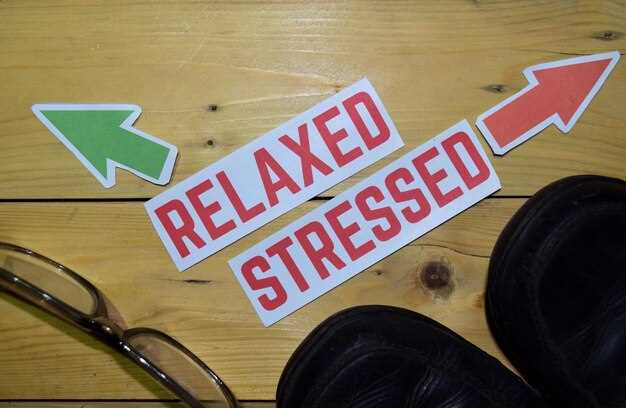Begin with a sixty-second grounding drill: inhale four counts, hold two, exhale six, repeat three cycles. This mindful pause lowers arousal and creates a balance between cognition and sensation. Visualize a known фильм scene where a character finds steadiness; this demonstrates you are able to reframe the moment rather than letting tension rise.
Extend into a five-minute sequence: four rounds of paced breathing (inhale four, exhale six); a rapid body scan locating shoulders, jaw, belly; a brief relaxation gesture for each tense area; then a stable gaze on a fixed point to anchor attention, mindful focus; a relaxation response. This эффективный routine trains the nervous system to turn away from high arousal, fueling a steadier mood.
Over weeks, you become better able to hold calm longer. This routine helps you respond to stress rather than react, turning attention toward relaxation using a steady rhythm. Use the breath as fuel to sustain related goals; whilst you practice, you probably notice mood shifts, both subtle and meaningful.
As brodsky would suggest, brevity makes meaning; this approach keeps cognitive load low while preserving depth, offering a pragmatic path to balance during hectic days. The meaning here is practical: tiny, repeatable cycles train the nervous system, enabling calmer responses whenever stress spikes, probably improving mood and focus across tasks.
Immediate 5-Minute Reset Techniques You Can Use Right Now
-
Breath anchor: Box breathing for 60 seconds. Inhale through the nose for 4 seconds; hold 4; exhale for 4; hold 4. Repeat until body feels calmer. This simple cadence anchors the nervous system, reducing irritable mood at work.
-
Grounding scan: 5-4-3-2-1. Name 5 things you see; feel 4; hear 3; smell 2; taste 1. Your attention shifts to the present moment, reducing overwhelm.
-
Posture reset: Sit tall; drop shoulders; relax jaw; unclench fists. Pause for two breaths; feel gravity support your position.
-
Calming cue: Tell yourself this moment begins now; turn attention to a single comforting sound, a breath, or a texture.
-
Quick energy move: Stand, stretch arms overhead for 3 cycles; rotate wrists; sip water; keep gaze soft. These seconds restore alertness, reducing irritable mood at work.
For a shared moment, someone nearby can join; a brief group reset boosts focus for the whole team.
If someone else feels overwhelmed, invite them to participate.
Seem skeptical? This quick practice proves effective for many.
Where you sit, a quick rearrange improves comfort.
Experiencing a common surge of irritability? This set is related to simple, guided moves. A few seconds later, posture shifts; breathing slows; focus returns to the task ahead in the workplace. Most were surprised by waves of calm arriving, caused by paced cycles; momentum grows, productivity rises, yourself re-centered. If you felt burnt or lost, these steps help rearrange your environment without noise, enabling more calm, more focus, more productivity. Ultimately, the rhythm trains your nervous system to return to baseline.
5-Minute Breathing Reset: Box or 4-7-8 Pattern to Calm the Mind
Box breathing triggers a quick reset in under a minute. Box style cycles: inhale 4 seconds, hold 4, exhale 4, hold 4; repeat 4 cycles for about 60 seconds.
4-7-8 option: inhale 4 seconds, hold 7, exhale 8 seconds; repeat 4 cycles, about a minute total.
Choose one method daily; youre able to feel a shift. If you prefer variety, switch Box or the 4-7-8 method; most find a single option works best.
| Box breathing | Inhale 4 seconds; hold 4; exhale 4; hold 4. Repeat 4 cycles for about 60 seconds. |
| 4-7-8 pattern | Inhale 4 seconds; hold 7; exhale 8 seconds. Repeat 4 cycles for about 60 seconds. |
These tips boost wellbeing. Reclaim resting into life. Most know the feeling; listen to others. Priority to practice couple times daily. Advice helps deal with intense feelings. Practicing saying to yourself ‘I deserve back calm’ then learn to reset. youre able to handle calm or tense feelings, later respond with intention.
5-Minute Grounding Reset: 5-4-3-2-1 Sensory Anchors
Starting a quick grounding cycle: five things you can see, four you can touch, three you can hear, two you can smell, one you can taste.
Position feet flat, sit tall, breathe slowly for five cycles; inhale to five, exhale to five.
While you proceed, notice shifts: shoulders soften, jaw unclenches, chest expands, hands loosen. Doing nothing else is required.
If funks appear during a trip or busy moment, this brief anchor stays ready; it requires nothing else to begin.
This certainly supports wellbeing, becomes a priority, fuels the process of returning to the present; reach a calmer state sooner.
When a sensation feels physically difficult, you are able to start again; you wont need complex tools; just repeat starting steps, burned muscles included; if things seem heavy, breathe.
Upon completion, check mood; ready to call the next action while maintaining position, breathing; nothing else demands attention. Last, observe how mood shifts. This benefits both body, mind.
5-Minute Progressive Muscle Relaxation: Tension Release from Feet to Head
Step 1: Feet, calves–tense for five to seven seconds, then release; notice mood shift toward relaxed. A brief check-in after release shows changes in skin temperature, slower breathing, softer shoulders. Ready to proceed to next region, keeping attention on the sensation of ease.
Step 2: Calves, thighs–tense leg muscles five seconds, release; notice a break in edge of tension; watch signs such as smoother breath, lighter mood.
Step 3: Hips, abdomen, chest–tense core region five seconds; release; feel breath soften; ribs expand on exhale; notice less overall intensity in the torso.
Step 4: Shoulders, arms, hands–clench fists, flex biceps, press shoulders up briefly; release; feel muscles soften, posture settle, mood improving.
Step 5: Neck, jaw, face–tense neck modestly, bite lips or jaw, then release; observe tension drift away, facial muscles soften, eyes relax.
Next, set aside 60 seconds of quiet rest; guided cues keep focus sharp; these tips support consistency; during a stressful event fear or negative mood might spike; notice signs of recovery becoming faster; the aim lies in smoother mood transitions, better sleep, clearer thinking; daily practice builds a ready baseline.
These guided cycles are effective for experienced practitioners; still, experiencing high tension might occur; notice signs of relief; next cycles deepen the impact; goals include calmer mood, better sleep, steadier focus.
5-Minute Cognitive Reset: Pause, Label, and Reframe Distressing Thoughts
Pause for a minute, notice what feels loud, label the moment, then reframe the thought as a temporary signal that can be redirected toward a practical step. This quick action will sharpen focus rather than spiraling; results last only if repeated, again later if needed. Even when feeling down, this reset can help.
Step 1: pause. Step 2: label the pattern as unease, not fact. Step 3: reframe into a concrete action that helps wellbeing, such as a brief walk, talking with a colleague, or a quick breathing sequence. Such labeling makes goals tangible, related tasks simpler, leaving nothing specific.
Carry this into early shifts in the workplace; common triggers caused by fatigue appear in life; media headlines blur focus; a short music clip helps shift slumps into a natural flow. This technique helps you learn again; talking with colleagues, quick activities help sustain momentum.
Schedule a daily five-minute check, note what remains specific, such as triggers in life or workplace; then adjust changes. This technique trains patients to respond rather than react; they last well when repeated. Illness transitions or early symptoms can trigger this practice, while media, music, talking, activities support these shifts; they wont erase all symptoms, yet wellbeing grows over time.
5-Minute Movement Reset: Gentle Exercises to Break the Stress Loop
Which intensity begins here: a simple, low-impact sequence designed to shift feelings within minutes. Listening to feelings; arms stay relaxed; breathing steady; you keep moving without overexertion.
Ход 1: Освобождение шеи – 60 секунд. Медленно наклоните голову к плечу, задержитесь в верхней точке на дыхание, вернитесь в центр, повторите на другую сторону, всего 60 секунд.
Ход 2: Круги плечами – 60 секунд. Поднимите плечи к ушам, отведите назад, затем опустите; повторите в плавном ритме, сохраняя ровное дыхание.
Ход 3: Шаг на месте – 60 секунд. Маршируйте на месте с легким подъемом колена; руки слегка раскачиваются; стремитесь к нейтральному тазу, выпрямленной осанке.
Ход 4: Круговые вращения тазом – 60 секунд. Поставьте руки на бедра, ноги на ширине плеч, вращайте бедрами по часовой стрелке, затем против часовой стрелки, дышите в синхронизации с кругом.
Ход 5: Раскрытие рук – 60 секунд. Разожмите руки в стороны, вращайте плечами вперёд, затем назад, удерживайте грудь открытой, позвоночник ровным, живот мягким.
Resting паузы между движениями необязательны; если появляется головокружение или слабость, обопритесь о стену для поддержки, затем продолжайте в более медленном темпе.
«Двигайтесь осторожно», — говорит гид.
Прислушивайтесь к ощущениям; что бы ни возникло в данный момент, двигайтесь в комфортном темпе; где бы вы ни были, несколько минут здесь начинают перезагрузку, которая ежедневно направлена на более спокойные эмоции.
Внезапно, короткая проверка, основанная на чувствах, остаётся полезной.
Там, где остатки напряжения, приходит спокойствие.
Решение проблем становится проще; движение служит якорем для регуляции эмоций и стабильности настроения.
В целом, ежедневная практика поддерживает более спокойную нервную систему, снижая негативно окрашенные реакции на повседневное напряжение.
Для всех, кто чувствует демотивацию, эти действия предлагают облегчение; Попытка этого в малых дозах вполне достаточна для начала; начало с одного или двух циклов поддерживает высокую мотивацию.
Когда обращаться за помощью: распознавание тревожных сигналов и следующие шаги
Примите меры немедленно: поговорите с доверенным человеком или специалистом в течение 24 часов, если тревожные признаки сохраняются после непродолжительного спада. Этот шаг сохраняет ваше благополучие; он поддерживает вашу сеть поддержки, готовую к более серьезному испытанию. Вероятно, он снижает давление; он начинает более безопасный процесс, который предотвращает превращение трудного дня в более крупный кризис.
Обратите внимание на такие симптомы, как усталость, которая не проходит после достаточного отдыха; нарушение сна; изменения аппетита; трудности с концентрацией. Тяжелое настроение, напряженные мышцы или потухший взгляд сигнализируют о необходимости поддержки. Истощение энергии, замедленная речь или раздражительность также являются подсказками. Если эти сигналы повторяются, отдайте приоритет контакту с кем-то, кому вы доверяете. Эти подсказки могут быть тонкими; возможно, вы замечаете их в том, как вы общаетесь с другими или в своей осанке.
Если риск возрастает или чувство безопасности становится неопределенным, немедленно обратитесь к местным службам кризисной помощи или в службы экстренной помощи. Поговорите с друзьями, членом семьи или соседом — с кем-то, кто может оставаться поблизости для контроля безопасности. Они обучены реагировать спокойно и с заботой; эта поддержка помогает вам сохранять спокойствие, снижать риск и сохранять связь.
Создайте краткий план, который начинается до кризисов. Перечислите трех человек, с которыми нужно поговорить, короткое сообщение и предпочтительный способ связи. Составьте компактный список симптомов, триггеров и шагов, которые помогают вам держаться на плаву, таких как быстрая перезагрузка, прогулка или прослушивание энергичной музыки. Этот процесс поддерживает ваше благополучие и снижает вероятность погружения в более глубокие спады. Держите план под рукой; пересматривайте его, когда появляются признаки. Этот поворот внимания становится действием, укрепляя вашу сеть поддержки.
Когда вы обращаетесь, начните с вашего сообщения перед более длинной беседой. Простая строка, например Мне нужна поддержка прямо сейчас; я неважно себя чувствую, устанавливает чёткие ожидания. Если вы предпочитаете звонок, скажите, что хотите поговорить в ближайшее время. Первоначальный контакт запускает поток, который привлекает внимание к вашему благополучию; а friend или someone Ваше имя отвечает с заботой; эта поддержка держит вас вместе, вероятно, снижает риск.
Держите ресурсы под рукой: телефоны доверия, мобильный список контактов и ваш план, хранящийся в доступном месте, не полагаясь на память. Если вы не можете оставаться дома одни, свяжитесь с другом или специалистом через телемедицину. Если вы чувствуете выгорание, отойдите от самого сильного раздражителя, сосредоточьтесь на медленном дыхании, а затем вернитесь к своему плану. Эта практика начинает восстанавливать топливо для вашего благополучия.
Помните: приглашение поддержки помогает вам избежать погружения в молчание. Ваше благополучие растет благодаря взаимодействию с друзьями; глаза остаются настороже; разговор остается частью рутины; вы не одиноки; кто-то здесь, чтобы помочь.

 Как выбраться из тупика тревоги и стресса с помощью 5-минутных перезагрузок">
Как выбраться из тупика тревоги и стресса с помощью 5-минутных перезагрузок">

 5 способов, которыми сайты и приложения для знакомств могут завоевать доверие пользователей">
5 способов, которыми сайты и приложения для знакомств могут завоевать доверие пользователей">
 Как одежда, которую вы носите, влияет на вашу производительность — научно обоснованные представления">
Как одежда, которую вы носите, влияет на вашу производительность — научно обоснованные представления">
 Сила одиночества – Тишина для творчества и роста">
Сила одиночества – Тишина для творчества и роста">